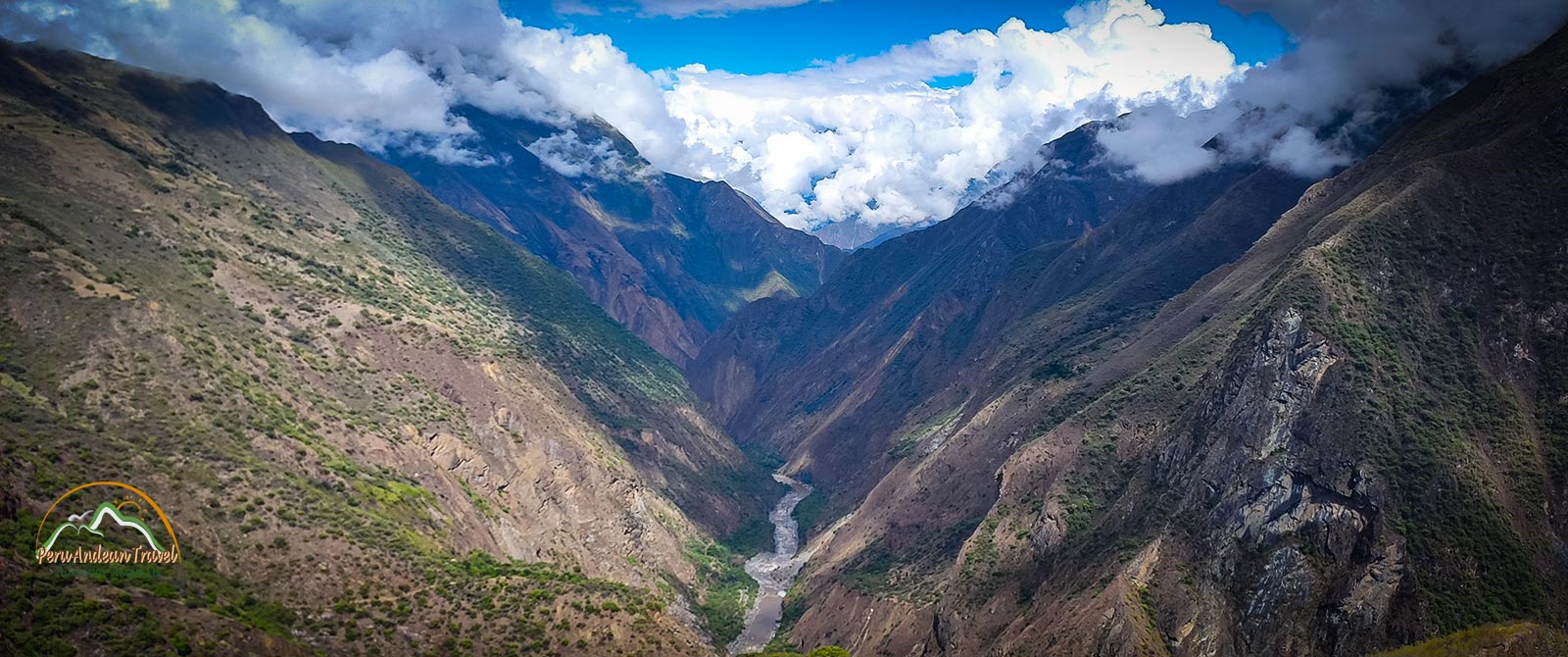The Apurimac canyon is 166 km from Cusco, around three hours and thirty minutes by car, and one of the deepest in Peru, possibly the world. It is the natural boundary between the Apurimac and Cusco regions.
This canyon is traveled by the river of the same name, which means “Apu”, deity or divinity, and “Rimac”, oracle or speaker.
For this reason it has been called the “talking river”, which makes a lot of sense when we visit this canyon and drawing close to its banks, we hear the river generating plenty of noise as the waters strike the rocks and sides of the mountains.
The Apurimac river has its source in the Chila range, on the mountain of Mismi (5597m) and is one of the most important in Peru, because on joining the Mantaro river it takes the name of the Ene river, which then joins the river Perene to form the river Tambo, which in turn joins the Urubama river, forming the river Ucayali, one of the main tributaries of the Amazon.
Of course, the Amazon is the biggest and most important river in all of South America, flowing into the Atlantic Ocean.
The Apurimac Canyon, in addition to hosting one of the most beautiful Choquequirao Peru Trek, has the additional option of rafting down the river, with a level of difficulty from II to IV, very popular with those tourists looking to do less traditional activities.
The Apurimac canyon, as well as possessing stunning views along the journey, also hosts flora and fauna typical of the region, and which are promoted through different private and public institutions. Some of these are:
Apurimac canyon, flora and fauna
Cloud Forest
The Cloud Forests are of the highest importance for the conservation of species, owing to their physical-environmental heterogeneity, which favors a high diversity of species in the highest levels of abundance.
Tucan (Andigena hypoglauca)
This is an endangered species whose main habitat is the Cloud Forest. One of their main functions in the environment where they live is the dispersal of seeds.
Spectacled Bear or Andean Bear (Tremarctos ornatus)
Another endangered species that needs great spaces in order to live, the Spectacled Bear carries out an important role in the food chain with the dispersal of plant seeds, thereby accomplishing the maintenance and re-growth of the forests; as well as acting as a pollenizer, carrying pollen on its thick fur.
Andean Cat (Leopardus Jacobita)
This species is considered in danger of extinction, belonging to the cat family, it inhabits the Andean steppes, feeding on rodents and small birds etc.
Seasonal Dry Forests
These forests have great importance as they constitute unique ecosystems in the Apurimac canyon, with various endemic species of plants and animals.
Forests of Queuñas (Polylepis spp)
In the area of the Apurimac canyon we can find three unique species in the genera, which are also refuges for abundant species of birds, you can see polylepis spp. on the Ausangate Trek too.
Orchids
The cloud forest is the habitat for a great number of orchid species, including some that are in the endangered category.









